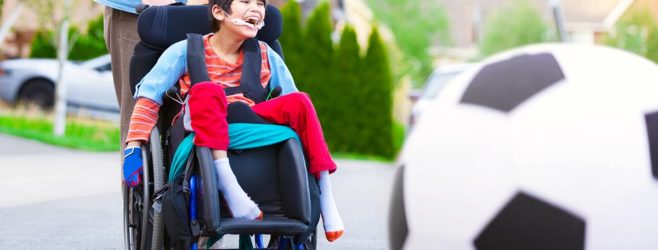Winter months can make it tough to ensure your child with special needs gets enough exercise. However, physical activity is especially important for children with disabilities. With spring upon us, it is a perfect time to shake off inactivity caused by the winter months and get excited about the warm weather. Read more to get ideas on fun spring activities that may be a good fit for your family.
The Importance of Physical Activity for Children With Disabilities
Getting enough exercise can create and improve motor pathways, form a mind-body connection, and build muscle. Regular physical activity can also help your child develop a better body image and overall sense of wellness.
All of these factors are very important if your child has a disability such as cerebral palsy.
Other benefits of physical activity for disabled children include:
- Encouraging social engagement
- Enhancing cognitive development
- Helping with behavioral issues
- Improving mobility
- Increasing serotonin levels, promoting happiness
- Strengthening gross and fine motor skills
Children may also get some relief from cerebral palsy symptoms such as spasticity through physical activities.
Ensuring your child gets enough physical activity can also reduce their risk of obesity. This is very important because, according to the Centers for Disease Control and Prevention (CDC), obesity can cause other health conditions.
“Children and adults with mobility limitations and intellectual or learning disabilities are at greatest risk for obesity.”
— Centers for Disease Control and Prevention (CDC)
As the weather improves across the country, it is the perfect time to get active with your child. However, before developing a spring activity plan, you should talk with your child’s health care provider to ensure your child’s safety.
Outdoor Spring Activities for Children With Disabilities
Spring is a great time of year to get fresh air. This is especially true for families who live in places with cold or snowy winters. It can also be a great opportunity to get the vitamin D that can become depleted after extended periods of time spent indoors.
Getting outside can mean more space and new terrain. With a little planning, you can help your child maximize their time outdoors, no matter their abilities. Read more for some suggestions that can be tailored to your child’s individual needs.
Artwork
There are many ways to incorporate art into outdoor activities for children with special needs. An added benefit of outdoor art is that it often involves squatting down, which can strengthen the legs and torso. Holding art supplies can also help with your child’s grasping skills and fine motor development.
Some fun outdoor artwork activities include:
- Drawing with sidewalk chalk
- Finding rocks to paint
- Painting on large pages of paper
- Playing hopscotch
By filling pie tins with different colored non-toxic paint, your child can even use their hands and feet to paint. Besides being new and fun, this method of painting helps strengthen major muscle groups.
Exploring Nature
Getting outside is an excellent way for your child with disabilities to get sensory experiences. Sight, touch, and smell are all stimulated through outdoor exploration. This can include lying in the grass, feeling gentle spring breezes, smelling flowers, and picking dandelions.
You can even create challenges and have your child find:
- Acorns
- Birds
- Insects such as ladybugs or caterpillars
- Interesting rocks
- Pretty leaves
You may wish to bring a magnifying glass to allow your child to study their new discoveries while you discuss them.
Flying a Kite
The breezy months of spring can be perfect for kite flying. Bringing a kite to the park or beach is an interactive and fun way to enjoy a windy spring day. With the right equipment, your child can participate in this challenging but fun activity and strengthen their motor skills along the way.
Outdoor Sports
Outdoor sports are a great way for your child to get the cardiovascular, strength-training, and flexibility benefits needed to stay healthy. Just about any sport can be modified to fit your child’s abilities.
Outdoor sports that are often a good fit for children with disabilities include:
- Bicycling
- Football
- Horseback riding (including equine therapy)
- Soccer
- Swimming (including aquatic therapy)
- Tennis
Your child may also like playing informal outdoor sports such as catch or kicking a ball back and forth.
Playgrounds
Visiting local playgrounds can be a great way to provide sensory stimulation and strengthen muscles.
Most playgrounds also offer equipment that helps kids work on:
- Balance
- Depth perception
- Spatial awareness
Playgrounds are also great places for your child to practice their social skills with other children who are playing there.
Getting Started With Spring Activities for Your Child
Depending on your climate, the winter months can be tough to ensure your child with special needs gets enough exercise. Springtime can be an exciting chance for renewed energy.
However, it is important to check with your child’s doctor before starting any new activities. This could include re-starting activities that were not done during the winter months.
New medications could impact the type of spring activities your child can participate in. For example, children with cerebral palsy may be on anti-seizure or antispasmodic medications that decrease how much exercise they can do.
Getting started with spring activities takes a little creativity and planning. The good news is that most spring activities can be altered to be appropriate for children of all abilities. Once you speak with your child’s health care provider, you can create a springtime filled with fun for you and your child.



